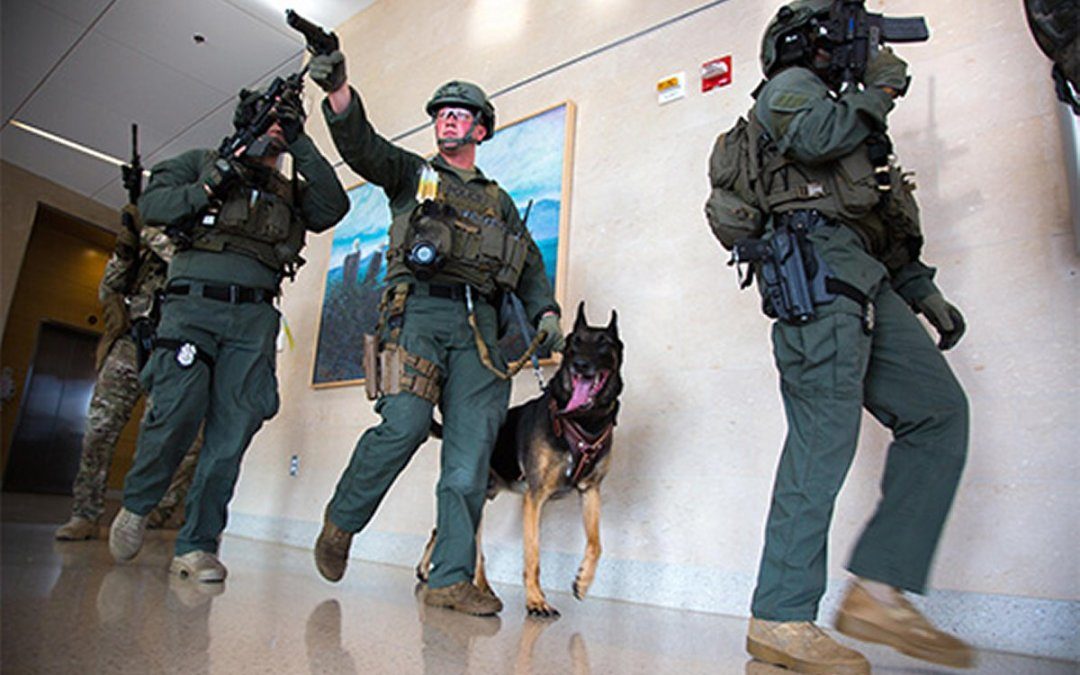Anyone passing by the Fort Belvoir Community Hospital must have wondered what was happening. Aircraft circled the facility, and emergency vehicles were everywhere. It certainly looked like a real-world emergency was underway.
Fortunately, that was not the case this time. Instead, medical personnel and emergency response teams were engaged in a drill designed to test their readiness for a potential future mass-casualty event. These exercises are routinely held across the U.S. Department of Defense Military Health System, an enterprise that includes 65 hospitals, 412 medical clinics and 414 dental clinics worldwide that serve nearly 10 million active-duty and reserve-component personnel, military retirees and their families.
As the two-day exercise played out at Fort Belvoir, personnel contended with a scenario that included an active shooter, an explosive device, and a hazardous materials spill.
Violence at medical facilities is all too real
As John Lease, Special Reaction Team program manager for the Military District of Washington, pointed out in a report on Army.mil, the U.S. Army’s official website, “1.7 out of every 10,000 workers will experience an assault on the job. When you’re a nurse, that number goes up to 6.1 per 10,000. That’s triple the rate, triple the threat. Violence in hospitals and medical facilities is a real thing. We take it seriously and want to ensure we train in an all-hazard, across-the-board response.”
Indeed, workplace violence is an issue across the entire U.S. healthcare system. According to U.S. Department of Health and Human Services statistics from 2014, there were 154 injuries due to workplace violence for every 10,000 hospital workers. Nursing home workers were even more at risk, incurring 228 violence-related injuries per 10,000. A total of 17,000 incidents were reported in 2014.
Saving lives through training
Military medical facilities like Fort Belvoir Community Hospital sometimes leverage outside emergency/preparedness/response professionals. This augments their ongoing efforts to be prepared and to provide the latest training for their employees and contractors.
In the realistic Belvoir drill, a handful of agencies and commands took part, providing hands-on experience that could save lives in any future crisis.
“This type of training is crucial to making sure we are ready for any potential disasters that could occur in the future,” said Mark Diaz, Belvoir Community Hospital chief of operations and emergency management, in the Army.mil report.
Lease called the training a “100 percent victory. It went incredibly well, and it’s vital to the mission of supporting interoperability measures within the Military District of Washington.”

